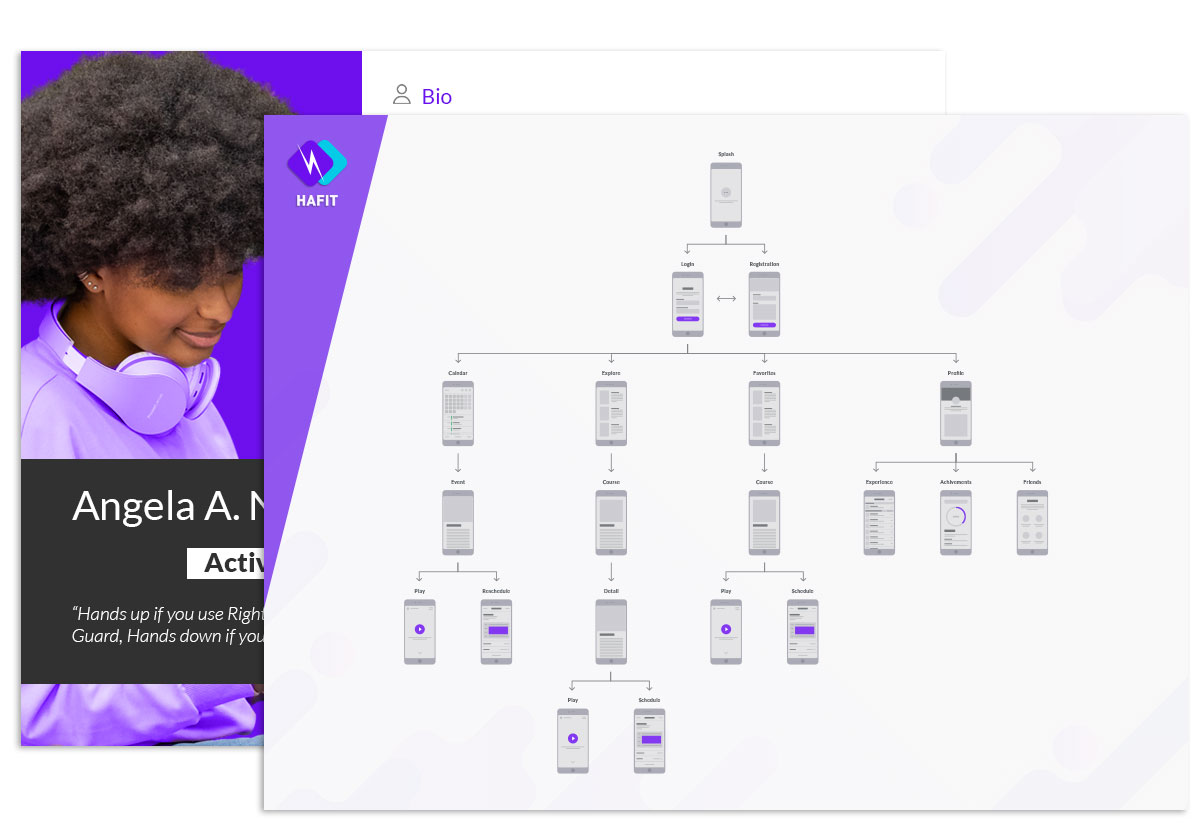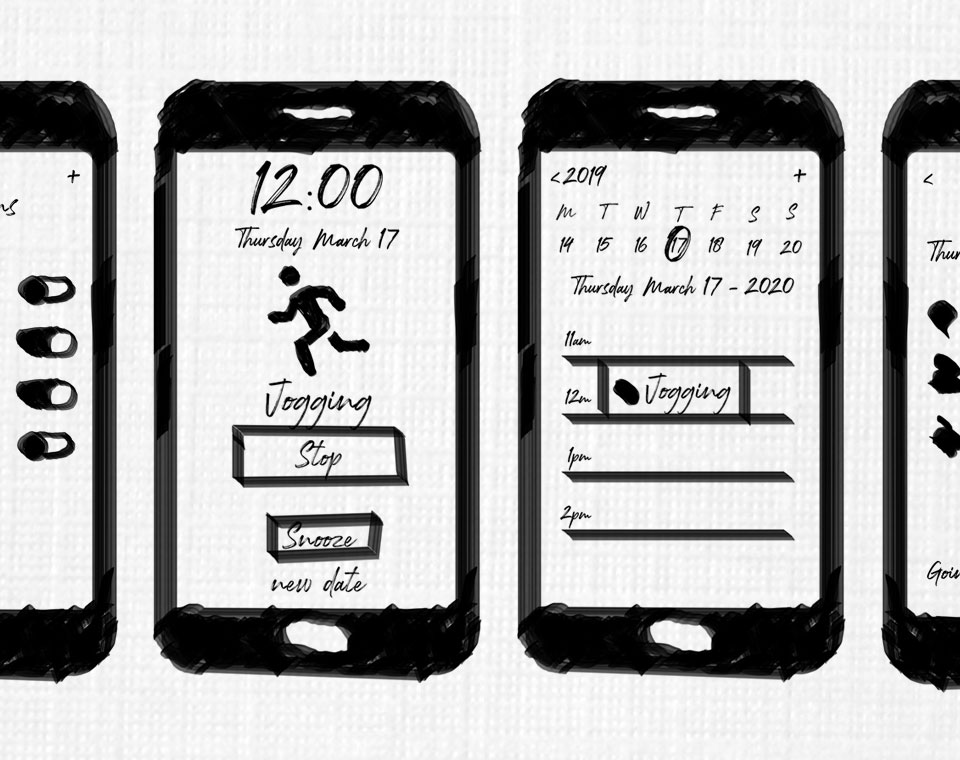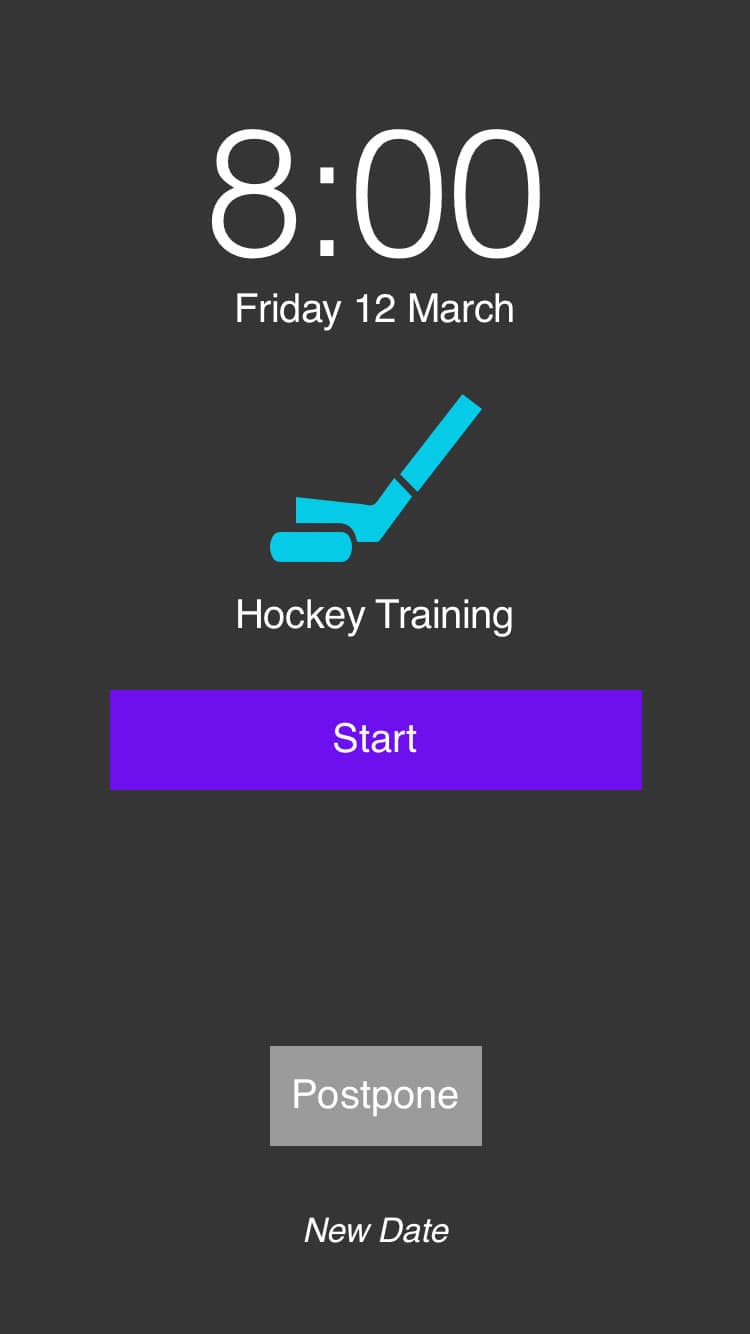The challenge
HaFit, an application that seeks to solve the typical problem of a sedentary lifestyle and lack of time or change of habits by scheduling tasks or tutorials
n order to help people change their static condition and improve the health of users, we did a study in which we found bad habits are often based on a lack of incentives or on not being able to have someone with whom to share different hobbies like sports.
We should optimize people’s quality of life without generating frustrating pressures or leading users to practice sports that do not generate any interest for them.
Our challenges:
- Motivate change
- Make exercise a hobby
- Give importance to health
- Adopt the tool to daily use
- Change behaviors
My role
As a designer of the entire pipeline, I worked as a service designer, user experience and visual designer, covering each of the phases of research, definition, prototyping, measurement and testing.
Understanding the importance of digitization in people’s lives was vital to provide a tool that was available to many people and therefore be able to promote a change in their way of life.
Design Process
Inspire me to change my lifestyle
Based on the lack of discipline we have as humans, the design concentrated on all the pain we have to gain a traditional skill. For this reason, this design process focused on users who have the desire to change and do not find a way through interviews, workshops, user tests and iterations where they themselves gave their opinion on how to be reached and be further inspired than pressured to perform a physical activity.
Research
It began by recruiting people who wanted to change habits they had for years. With them through interviews and workshops, we defined stages and devices that prevent an ordinary person from changing behaviors. These journeys made it clear to everyone the key moments in which we intend to change and we don’t, or even activities that distract us from our goals and make us stay with only ideas.
Taking for granted the major pains and frustrations, we brainstormed ideas on which we voted as the most outstanding and with these, storyboards were made that explain the primary functions that tools should have to lead a user to capitalize on these ideas of change.
Deliverables: Brainstorming photos, storyboards, competitive analysis, interview report and recordings, inspiration boards, workshop results.

Definition
User personas were determined according to the multiple roles that the application would have with their respective strengths, weaknesses, likes and needs, all inspired by the empathy maps that resulted from the interviews.
For each user person, the flows of screens to go through to achieve the objectives of each one were designed and from there the corresponding epics and user stories were estimated in order to structure a realistic development plan and according to the features of the application to be created.
Deliverables: Screen flows, user personas, development plan, journey maps, affinity maps, experience maps, user stories, golden paths.
Prototype
The flows designed in the previous stage helped to structure paper sketches that, as they multiplied, consolidated paper prototypes that were tested by users and on which iterated twice until defining an operating baseline.
This foundation led to making digital prototypes to be tested natively in the ultimate devices and thus understand the behaviors, movements and even gestures or attitudes of the participants.
Deliverables: Sketches, wireframes, low-fidelity design, WOZ mockups, interactive prototypes.
Design
A style guide was created for the application, with its voice, colors, shapes and modes, shaping a careful and attractive brand manual, which takes the viewer through the Hafit ecosystem.
Starting from the style guide, all the components that the project would have were created atomically. With this, it developed a design system along with its patterns to give it scalability and structure, which were reflected in the application's consistency.
Deliverables: High-fidelity design, interactive prototypes, design system.
Test & Measure
All user tests began with emotional and numerical hypotheses, which were to be tested against the users’ performance in fulfilling or not fulfilling the designated tasks.
User tests grown over time starting with paper prototypes, going through wireframes and finally high-fidelity prototypes, in each of them, iterations were made to correct, move and update components to make them clearer and more attractive to the user, thus helping all the different roles to achieve the objectives that they want to execute.
Deliverables: Task flows results, accessibility results, heatmaps, scrollmaps, clickmaps, A/B tests results, heuristics, accessibility results.
Results
25
Surveys
31
Usability Tests
16
Iterations
82
Artboards
Learnings
Changing habits is complex and even more so if they have been abandoned for years or we have not even tried to start. For this reason, it is essential to understand the context of our society and reach people naturally avoiding friction.
Lately we have a lot of time in front of screens, so this becomes an opportunity to change and learning through videos and audios allows us to know topics in which we were not even aware that they existed and that knowledge allows us to change. In this way, inspiring through multimedia taught by experts, makes us have a closer aspirational and not a simple abstract idea.
Gamification allows us to get involved and commit not only to ourselves but to others, whether they are a team, family or co-workers. Acquiring a habit does not depend on an application itself, but on a series of routines that we must gain, that we can adopt over time, we as technology facilitators must support this adoption through levels and understanding of the user since we do not We all have the same level of knowledge or discipline.



